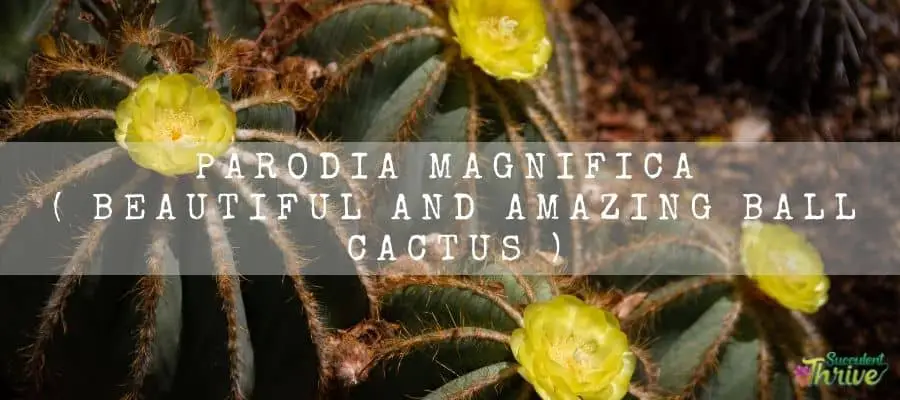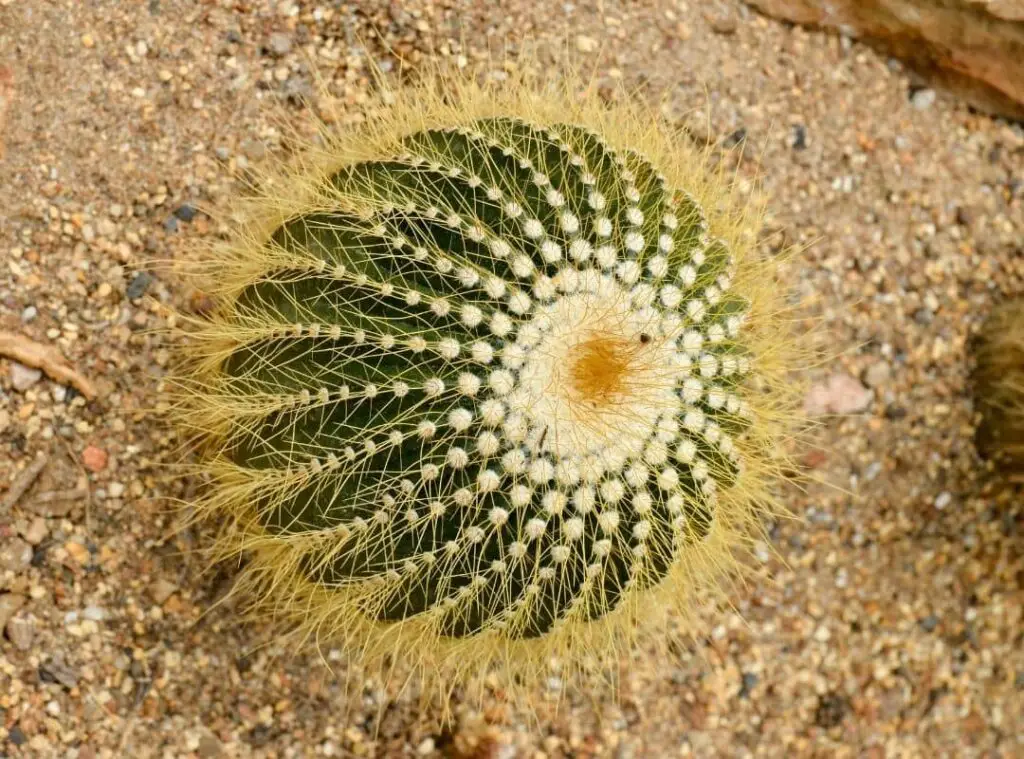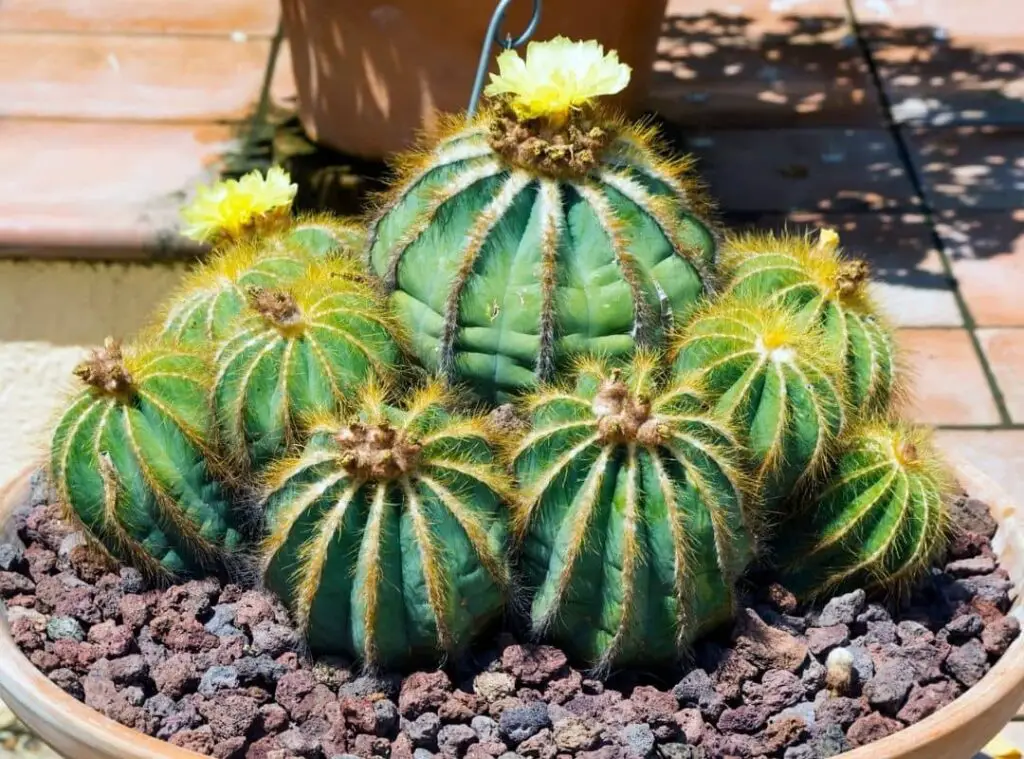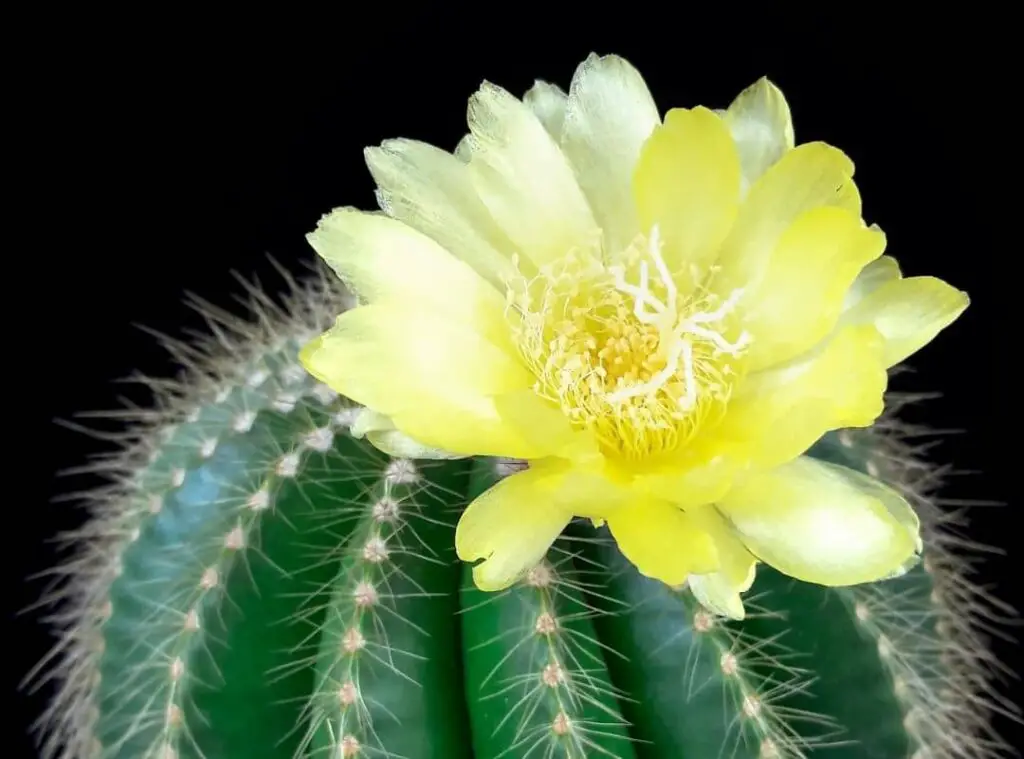Parodia magnifica is one of the most promising and striking cacti you can find in the succulent / cactus world. Parodia magnifica belongs to the Cactaceae family and the genus Parodia. Further their species is Magnifica.
However, it was called Notocactus magnificus and Eriocactus magnificus in the past and Parodia magnifica was the scientific name which was given for them recently.
This is a famous plant which many succulent lovers tend to grow purely because of the aesthetic beauty they have.

Rounded ball cactus is the common name of these beauties.They are also known as balloon cactus, green ball cactus and blue ball cactus.
These are native plants to South American grasslands particularly in Brazil. Before we proceed further, if you are a succulent lover and planning to grow these cuties, buckle up and get ready to learn more about these plants.
This article is about how you should grow them, the modes of propagating them and the diseases they may encounter.
How do I identify Parodia magnifica?
Parodia magnifica grows in a spherical spiny structure at the beginning. However, as they grow, they grow in a columnar shape.
They would consist of a ribbed stem, and they would be about 12 inches ( 30.48 cm ) when they fully grow.
Further their width would be about 6 inches ( 15.24 cm). You will see how their stem is covered with spines. Those spines would be yellow.
Besides the Parodia magnifica stem would be either green or having a tinge of blue green. These characteristics have made them earn the aforesaid common names.
In addition to aforesaid, Parodia magnifica produce a crown in yellow during summer. That will look more like a flower. You can easily identify the Parodia magnifica from these features.
Growth rate
Parodia magnifica usually show rapid growth.
One look care guide
| Botanical Name | Parodia magnifica |
| Common Name | Rounded ball cactus Balloon cactus Green ball cactus Blue ball cactus |
| Plant Type | Cactus |
| Mature Size | 12 inches ( 30.48 cm ) height 6 inches ( 15.24 cm) in width |
| Sun Exposure | Full sunlight to partial shade |
| Soil Type | Well draining |
| Soil pH | 6.1-6.5 |
| Bloom Time | Spring and summer |
| Flower Color | Yellow |
| Hardiness Zones | USDA hardiness zones 9b to 11b from 25 °F (−3.9 °C) to 50 °F (+10 °C). |
| Native Area | Brazil |
| Toxicity | Nontoxic |
| Average price | USD 9 |
How do you take care of Parodia magnifica?
Parodia magnifica can thrive well with neglect. Further, they are a hardy and versatile set of plants as they can stand super hard conditions and still remain healthy.
Light Requirement
Parodia magnifica require strong sunlight levels for their survival. As such , if you have selected a spot indoors to grow them, you should go for a brightest sunny spot indoors.
It could most probably be a brightest sunny windowsill and any other place where they can gain plenty of sunlight.
If the plants are still lacking sufficient sunlight levels, you could bring them outdoors during daytime and bring them back indoors.
In terms of the intensity of sunlight, outdoor sunlight would always be better than indoor lighting. Further outdoor lighting should be brighter.
However, when you bring the plants outdoors from indoors, ensure that you slowly accustom the plants to outdoor sunlight.
The abrupt exposure for intense sunlight would be harmful and it would create sunburns in the plants.
Moreover, if you wish to enhance the light exposure for indoor grown plants, you can place grow lights closer to them. You can use fluorescent lights, LED bulbs for this purpose.
If you think the sunlight would be extreme, you can consider placing the Parodia magnifica plants under taller plants so that they can gain filtered sunlight.
Further you may also use sunshades to protect the plants from heat waves as well as from intense sunlight.
Parodia magnifica would prefer to have more morning sunlight as it is less intense compared to midafternoon sunlight.

Temperature and humidity
Parodia magnifica do not prefer super low temperatures as they will only create harmful effects on the plants.
Literally anything below 10 degrees Fahrenheit would be unhealthy for them. As such you need to shift them indoors to protect them from older temperatures.
The exposure for colder temperatures will make them suffer. Hence if you have warmer temperatures right throughout the year, you can grow them outdoors.
On other hand, if you live in an area with much colder temperatures, an indoor location or a container would be much appropriate for the Parodia magnifica plants.
If you grow them in a container outdoors, you can bring them indoors or shift them to a greenhouse whenever the temperature decreases.
If you still wish to grow them as outdoor plants, you need to protect the plants from using frost cloths or from blankets. Alternatively, you can set up a small greenhouse to place them during winter.
Is it cold hardy?
USDA Hardiness Zone
Parodia magnifica’ s preferred hardiness zones are USDA hardiness zones 9b to 11b: from 25 °F (−3.9 °C) to 50 °F (+10 °C).
Watering Requirement
You need to adjust the way you water the Parodia magnifica depending on the season and on the size of the plants as well.
If you have a well-established Parodia magnifica plant, you can water them less. On the other hand, if you have a younger Parodia magnifica plant, you can water them more.
You need to give a thorough watering for them during summer and refrain from watering them again before they dry.
Ideally check whether the top layer of the soil is dry before you water them again. Unless the excess moisture would create so much trouble for the plant’s healthy growth.
You can water them once every 10-14 days during summer. Having said that, if there are heat waves, you need to increase watering.
Once the temperature gets colder in seasons such as fall and winter, you have to minimize watering them. Ideally you can water them once every three weeks to four weeks.
If you feel like the soil is wet when you touch it, you should wait for a couple of more days and then water.
You need to keep the plants dry during winter as they are prone for root rot during colder times.
If you expect rainfall during winter, you can completely suspend watering during winter. Instead, you need to safeguard the plants from getting exposed to constant rainfall.
Ideally you need to bring them to a shady place if you experience rainfall constantly. If you wish to ascertain the moisture levels in the soil, you can use moisture meters and hygrometers.
Soil Requirement Type / pH
A substrate which has an excellent drainage and porosity would be optimal for the Parodia magnifica plants.
They will provide the best growing conditions for the Parodia magnifica plants. You may proceed with a standard cactus soil mix for this.
However, ensure that you combine it with perlite so that it will enhance the draining. The right ratio should be 1:1.
Alternatively, you may also use a sandy soil mixture of coarse sand and cactus mix which you need to mix at a ratio of 1:1.
Moreover you may also use a mix of cactus mix, perlite, and coarse sand at a ratio of 1:1:1. This way it will provide a good draining as well as a good aeration as well.
Consequently, your precious Parodia magnifica plants would be less prone for diseases such as root rot.

Pot size Potting and Repotting
When you need to select the right pot to plant the Parodia magnifica plants, ensure that you are using a spacious pot to grow them.
That is simply because once they grow, they tend to grow in clusters, and they need to have adequate space to form the new bulbs. Needless to mention that they need to have a draining hole as well.
When it comes to repotting, you should ideally do it during their growing season so that you can get the most successful results.
Further it is not something which you need to do often and if you spot the plants has outgrown from the pots, you need to consider repotting them.
However, when you interact with the plants, ensure that you practice precautions as unless it could harm you.
They have spikes which are quite prickly, and they would harden as they mature. Refrain from repotting during winter as it could be traumatizing for the plants.
Where to Plant
You need to plant them in a porous container when you grow them as indoor plants.
Further ensure that you place it in the brightest sunny spot at your home so that they could fulfill their sunlight requirement.
Moreover, plant them in a well-draining and airy soil mix too. If you wish to grow them outdoors, you should select a place where they can gain morning sunlight and partial shade in the late afternoon.
Fertilizer and time of year
If you had repotted the Parodia magnifica plants recently, you do not need to apply any fertilizers.
Having said that as they grow, the nutrients would deplete. In that circumstance if you add fertilizers, it will allow them to gain nutrients freshly.
You can feed them when they are in their active growing phase. Ideally you should go ahead with a fertilizer which is diluted to ¼ to ½ strength from the prescribed dose.
Further you can add the fertilizers fortnightly or once every month. Ensure that you use a fertilizer which is specially made for cactus for succulents.
Flower
Parodia magnifica plants bloom with some attractive bright cherry yellow color flowers. In fact, the mature Parodia magnifica plants will produce flowers as they are ready for reproduction.
If your Parodia magnifica plants are mature and still don’t flower, you can encourage flowering by practicing several extra care steps. Usually, they would produce flowers in spring and in summer.

Dormancy
Toxicity
Parodia magnifica plants are not toxic plants for pets or for humans. Having said that, you should be extra careful when handling them as they contain sharp spines, and they could injure you.
Common bugs and illnesses
Parodia magnifica plants are hardy plants and they can generally resist the pests’ attacks and the diseases.
Having said that, chances are that regular pests such as mealybugs and aphids’ could invade them. If you spot any white cottony appearances, it could be due to mealybug infestation.
They could be so annoying as they could attack the plants during any time of the year, particularly if they get favorable conditions to invade the plants.
On the other hand, you could spot the aphids attacking the Parodia magnifica plants during summer and spring when they produce flowers.
To treat them, you can use a mixture of rubbing alcohol and water and simply spray them at the plants. Besides, you may also use an appropriate pesticide as well.
Special Care tips
Parodia magnifica plants are strong contenders in resisting the pests’ attacks and diseases. So, all you need to do is to look after these plants well and provide them the basic growing necessities
How to propagate Parodia magnifica
How to propagate the Parodia magnifica by the offsets
Using the offsets propagation method is the best mode of propagating the Parodia magnifica plants.
If you spot the offsets have formed around the plants, you need to carefully pluck them off from the parent plant and allow the wounds to wither.
Let them develop callousness in a warmer and dry place. Next as aforesaid you need to arrange a soil mix and place the cuttings in the soil mix.
Ensure that you look after them until they produce roots. Do not expose them for direct sunlight. Once they produce roots, you can repot them.
How to propagate the Parodia magnifica by the seeds
Keep in mind that if you wish to use the seeds propagation method, it will take a little longer to form the roots.
You simply have to plant the seeds and stay patient until they produce roots. Keep them moist until they form into new plants. You need to practice both these propagation methods in spring and in summer.
Conclusion
To conclude, trust this article made you excited to have a Parodia magnifica plant ! You will love that experience and it would be truly fulfilling to see your Parodia magnifica plants flourish ! So happy cultivating !
Read Next : Rebutia Wessneriana | Freely Clustering Globular Cactus | Espostoa Mirabilis | Cute And Beautiful Columnar Cactus Care |
